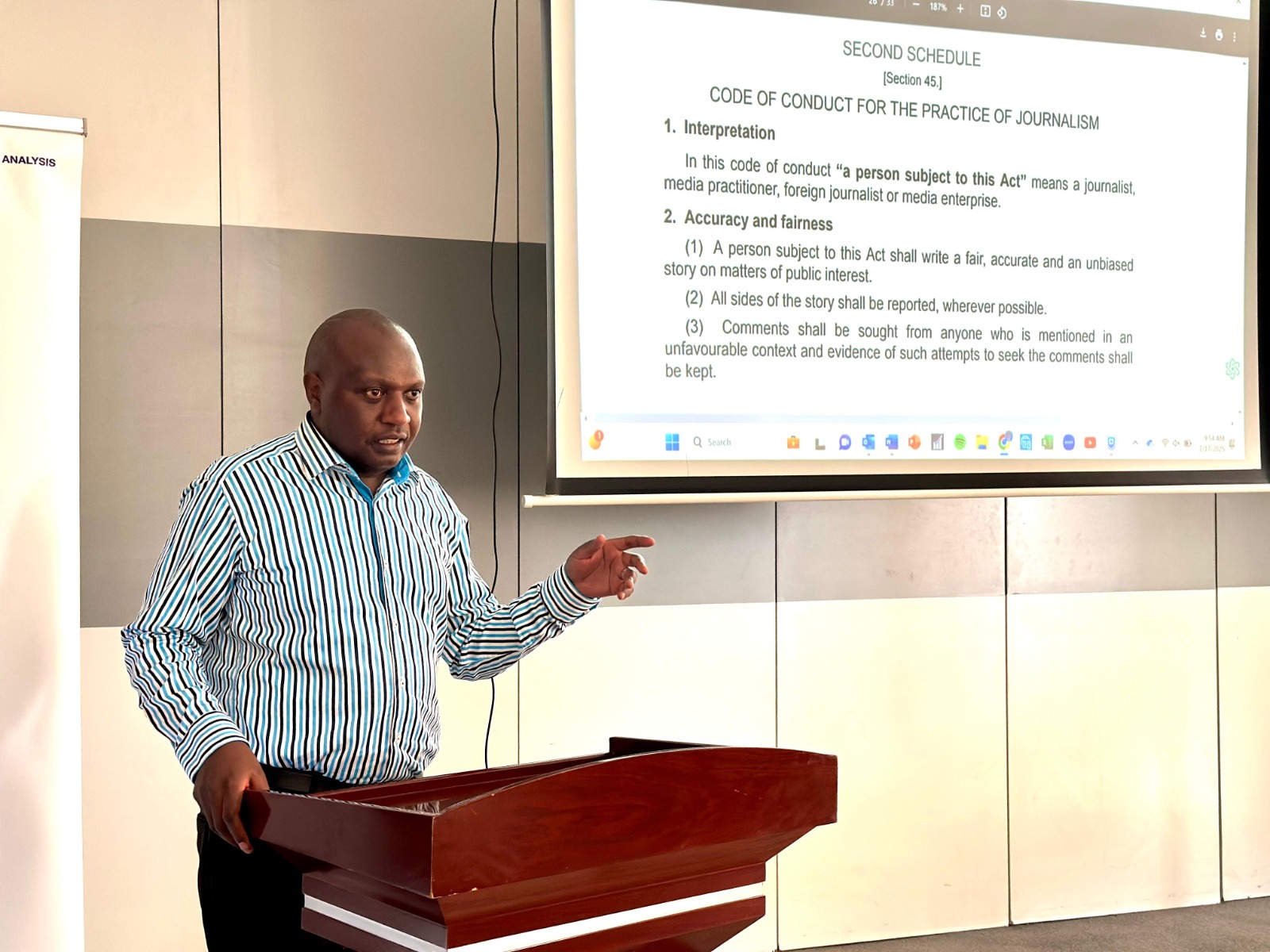
The Media Council of Kenya (MCK) has initiated a process to update the Code of Conduct for the Practice of Journalism in Kenya.
According to MCK CEO Mr David Omwoyo, the current code is inadequate to provide comprehensive ethical guidance to the evolving media industry. Developed in 2013, the existing code no longer addresses many of the emerging issues in the media sector, prompting its review.
“The rapidly changing media landscape, driven by technological advancements and new innovations, has significantly impacted journalistic practices. Emerging issues such as data protection, personal rights, artificial intelligence (AI) and user-generated content have altered how journalism is practiced. As such, the Council is undertaking a review of the existing code to align it with these developments”, Mr Omwoyo said during the Code of Conduct review retreat.
Mr Omwoyo emphasised that the evolving nature of the media industry calls for not only an update but also an expansion of the code. This includes renaming the code to ensure it reflects the diverse range of practitioners in the media space. Additionally, the review will focus on creating guidelines for responsible media coverage, especially to discourage the glorification of conflict, crime, violence and crisis situations.
“As AI and other technology-assisted reporting tools evolve, they are no longer just tools for content manipulation—they now serve as means for generating content. This shift raises concerns about misrepresentation and content theft, making it crucial to develop guidelines to address these issues”, he said.
The CEO also highlighted the importance of developing internal protocols for data protection, especially as the law classifies media outlets as privileged data processors.
He stressed the need to expand protections for children from harmful content, including live coverage of violent incidents, and called for measures to ensure the production of local content within Kenyan media outlets.
“There is a need to enhance child protection to guard against online predators and ensure children are not only viewed as sources and subjects but also as consumers and producers of content ”, he explained.
In addition to these concerns, Mr Omwoyo mentioned that the revised code would provide clear guidelines on issues related to religion and beliefs while also safeguarding the public against media outlets that promote harmful practices such as occultism, witchcraft and gambling.
Kenya Editors’ Guild President Ms Zubeida Kananu stressed the importance of avoiding sensationalism in news reporting, urging journalists to focus on delivering factual information.
She affirmed that the review of the code was timely and necessary to address emerging trends in the industry.
“We must adhere to the Code of Conduct for the Practice of Journalism in Kenya. The review is timely and will help address some of the gaps that have arisen due to changes in the media landscape”, Mss Kananu said.
She also advocated for the development of local policies to address the ethical challenges posed by AI and other emerging technologies. Additionally, she encouraged the Council to organise sensitisation sessions for journalists to familiarise them with the new code.
Media and legal expert Mr Hassan Kulundu commended the MCK for updating the code, noting that the current version had been overtaken by events and no longer adequately addressed the complexities of modern journalism.
Summary of reasons for reviewing the Code of Conduct for the Practice of Journalism in Kenya:
1. Inadequacy of the Current Code: The existing code, developed in 2013, no longer provides comprehensive ethical guidance due to the evolving media landscape and emerging issues.
2. Technological Advancements: The rapid changes in media, driven by new technologies and innovations such as AI and user-generated content, have altered journalistic practices, requiring updates to the code.
3. New Ethical Issues: Emerging concerns like data protection, personal rights, misrepresentation, and content theft related to AI-driven content creation necessitate new guidelines.
4. Child Protection: There is a need for stronger protections for children from harmful content, including ensuring their safety in live coverage of violent incidents.
5. Responsible Media Coverage: The review aims to discourage the glorification of violence, crime, and conflict in media reporting.
6. Local Content Production: Measures are needed to encourage the production of local content in Kenyan media outlets.
7. Addressing Harmful Practices: The revised code will address issues such as harmful media practices, including occultism, witchcraft, and gambling promotion.
8. Changes in Media Practices: The evolving role of technology-assisted reporting tools in content generation calls for clearer guidelines to ensure ethical journalism.
9. Ethical Challenges of AI: The review will address the ethical challenges posed by AI and other emerging technologies in journalism.
10. Need for Sensitisation: Journalists need to be familiarised with the new code through sensitisation sessions to better navigate these changes.